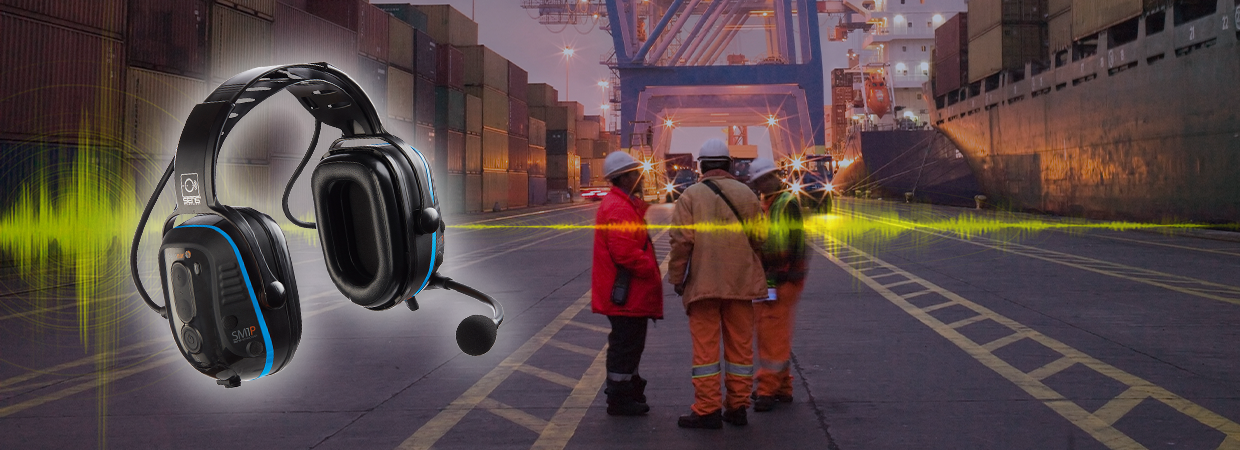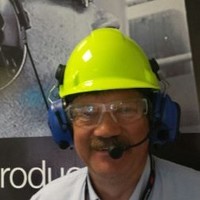- Home
- Blog
- Situational Awareness
- Decluttering Situational Awareness from a European Perspective

Decluttering Situational Awareness from a European Perspective
The power of human hearing should never be underestimated. It plays a crucial role in helping us navigate our surroundings, along with our eyesight. Together, they provide our brains with vital information about our location, potential hazards, and where we want to go. When either of these senses is hindered, our ability to understand our environment and move safely is compromised. That's why improving our situational awareness, especially through enhanced hearing, is considered a significant advancement for our safety and well-being.
In today's fast-paced and constantly evolving work environments, having situational awareness is a crucial skill for workers in various industries. However, there is a surprising lack of established standards when it comes to training and guidelines for workers to develop and nurture this vital skill. Without a global agreement and clearly defined criteria and testing procedures, we are left with a mismatch of differing opinions, standards, and test procedures. In Europe, EN352-4 is the standard for level-dependent ear muffs, and EN352-7 is for level-dependent ear plugs. Many manufacturers consider level dependency to be aligned with Situational Awareness, making these two sections the preferred "standard."
Electronic headsets/earmuffs that provide situational awareness are known by various names, showcasing their versatility and functionality:
- Level Dependent Function
- Level Dependency
- SENS® TECHNOLOGY
- Ambient Listening
- Enhanced Attenuation
All the options mentioned above provide varying levels of functionality and approaches to situational awareness. The headset cups are equipped with microphones that constantly monitor the surrounding noise levels whenever the headset is turned on. These microphones respond to changes in the ambient noise, which in turn adjusts the level of protection provided to the wearer. In certain headsets, the microphones are positioned forward, like the placement of human ears, mimicking the natural way of hearing. On the other hand, some headsets have microphones placed in the middle of the cup, offering a wider coverage of sound (360°), but resulting in a slightly different perception of sounds compared to what one is normally accustomed to.
Level-Dependent Headsets
Certain headsets, such as Sensear's, are equipped with microphones and microprocessors that can isolate and enhance speech frequencies while simultaneously reducing background noise and providing situational awareness. This innovative technology allows the wearer to hear their colleagues' conversations, even in high-noise environments, while still protecting against Noise-Induced Hearing Loss (NIHL). When the ambient noise levels are below 82 dB(A) (TWA), these microphones can amplify the surrounding sounds by up to 16 dB, resulting in improved hearing and enhanced situational awareness. This means that wearers can easily locate themselves in their surroundings and have better auditory perception of alarm signals, approaching vehicles, and voice warnings, among other things.
Typically, these headsets are designed to replicate the natural stereo-hearing experience, assuming both ears are functioning properly. The microphones capture external sounds and transmit them through speakers inside the headset cups, allowing the wearer to hear their surroundings while wearing the headset continuously. In contrast, passive headsets without situational awareness are considered "isolating" because they block out all noise, leaving the wearer unaware of their environment. However, when ambient noise levels surpass 82 dB(A) (TWA), the headset's internal circuit board and microprocessor automatically limit the speaker output, ensuring that the wearer is not exposed to sounds louder than 82 dB(A) (TWA).
For instance, if the surrounding noise reaches 100 dB(A), the headset's electronic system will swiftly reduce it to 82 dB(A) for the wearer, resulting in an assumed protection level of 18 dB attenuation. If the ambient noise level escalates to 105 dB(A), the electronics will immediately respond by lowering it to 82 dB(A), thereby providing a 23 dB attenuation assumed protection level. The extent of attenuation is contingent upon the level of the surrounding noise, hence the term "level-dependent" is used to describe this particular technology and headset.
These headsets have incredibly fast reaction times, measuring changes in ambient noise levels in milliseconds. This makes them ideal for situations where there are sudden bursts of impulse noise like gunshots or hammering. They are also perfect for environments where the noise levels can fluctuate automatically without any input from the wearer. When an impulse noise occurs and then subsides, the headset's microprocessor quickly adjusts the settings back to normal. It essentially closes off when the noise begins and immediately opens back up once the noise is gone. During the noise, it reduces the volume to 82 dB(A) (TWA) for the wearer, providing optimal protection.
EN352 Standard
Why is the volume limited to 82 dB(A)? The European Health & Safety Law on permissible levels of Noise Exposure in the Workplace was established in 1984 with the publication of EN352. This standard outlined key noise levels for workers' exposure to noise:
- First Action Level (FAL) - 85 dB (TWA)
The FAL was considered an advisory level, requiring employees to receive training and education on the dangers of NIHL and be provided with suitable hearing protection for short-term use. It was strongly encouraged for employees to wear this protection, although it was not mandatory. - Second Action Level (SAL) - 90 dB (TWA)
The SAL was classified as a mandatory requirement, as the risks of NIHL were deemed significant enough to make the wearing of suitable hearing protection compulsory in specific locations.
The level-dependent functionality was set at 82 dB, aligning with the above levels. However, everything changed in 2004. The "Physical Agents Directive" was a document under consideration by the European Union (EU). As part of this process, authorities in Sweden re-evaluated the permissible levels of noise exposure in the workplace and reported their findings to the main EU council. These findings led to significant changes to EN352, which became effective in 2005 and now serves as the foundation for the Control of Noise at Work Regulations 2005 in Europe.
The changes were as follows:
- The First Action Level (FAL) saw a decrease from 85 to 80 dB (TWA) and was reclassified as the Lower Action Value (LAV)
- The TWA was described as the 8-hour Led’p
- In terms of impulse noise, the limit was set at 112 pascals or 135 dBC (Lcpeak)
- SAL was lowered from 90 to 85 dB (TWA) and became the Upper Action Value (UAV)
- The TWA was described as the 8-hour Led’p
- In terms of impulse noise, the limit was set at 140 pascals or 137 dBC (Lcpeak)
- A new level was introduced – The Exposure Limit Value (ELV) set at 87 dB (TWA)
- The TWA was described as the 8-hour Led’p
- In terms of impulse noise, the limit is set at 200 pascals or 140 dBC (Lcpeak)
However, the level-dependent level of 82 dB (TWA) remained unchanged from the old standard.
Ideal environments for headsets with situational awareness capabilities include:
- Any location with sudden erratic impulse or impact noise.
- Any location where noise levels can change without the employee knowing of any changes. The headsets' electronics will react much quicker than human reflexes.
- Any location where hearing protection is a requirement, but where the employee may also be required to be made aware of warning sirens, approaching vehicles, or any other audible warning.
- Highway maintenance or curbside refuse collection.
- Preventing “over protection”- see below.
EN458 Standard
In Europe, there is an additional standard known as EN458 that focuses on the selection and choice of hearing protection. This standard aims to define the acceptable levels of noise reduction that employees should have after using hearing protection. Ideally, the noise at the ear level should be reduced to below 80 dB (TWA), which is referred to as the Lower Action Value (LAV). However, many in the industry tend to lean towards 82 dB (TWA) as this aligns with the criteria for level-dependent headsets.
EN458 also cautions against excessive attenuation, which can pose a significant issue for the wearer. It emphasizes that the noise at the ear level should not be reduced below 70 dB (TWA), as this can lead to a sense of sensory deprivation and complete disconnection from one's surroundings. Moreover, it hampers the wearer's ability to hear important auditory cues like warning sirens, approaching vehicles, and verbal warnings. This excessive reduction in noise is commonly referred to as overprotection and should be avoided whenever possible.
Overprotection
Over the years, passive hearing protection has been widely used in the workplace to prevent NIHL. However, simply purchasing the most highly attenuating passive earplug or earmuff is no longer considered a viable solution, as they can often provide excessive levels of noise reduction, which goes against the EN458 standard. So, how can you find the right product for your specific needs?
To begin, it is crucial to conduct on-site measurements of noise levels using both "A" and "C" weightings, as well as Time Weighted Averages (TWA) and Octave Band Analysis (OBA) to analyze the frequency breakdown of the noise. After analyzing the OBA data, compare it with the manufacturer's attenuation performance figures to determine the level of noise at the ear. If this value falls below 70 dB (TWA), it means that the product is providing excessive protection, which is known as overprotection. In such cases, it is recommended to look for a low attenuating HPE device that allows for a noise level at the ear ranging between 70 and 82 dB (TWA). Fortunately, there are currently several products available in the market with SNR levels in the low 20s dB that meet these requirements. If you're still struggling to find a passive product that meets your needs, the solution lies in level-dependent headsets. Sensear's innovative industrial headsets utilize their unique SENS® Technology to deliver precise levels of noise reduction, regardless of the surrounding noise, all while enhancing speech and maintaining complete situational awareness.
Using Level-Dependent Headsets in Extremely High-Noise Environments
As we have already established, level-dependent products are perfect for employees working in environments with intermittent impulse noise or where noise levels are just on the brink of becoming a problem. However, when it comes to dealing with extremely high levels of noise, it is important to understand the limitations of these products. Despite being level-dependent, these headsets are also governed by EN352 regulations, meaning they offer the same fundamental noise reduction capabilities as a regular passive product.
Let's take a closer look at a level-dependent headset with an SNR (Single Number Rating) of 30 dB. In our previous examples, we discussed how the headset's electronics can reduce ambient noise from 100 dB to 82 dB, providing an assumed protection level of 18 dB attenuation. Similarly, if the ambient noise level increases to 105 dB, the electronics will swiftly react and lower it to 82 dB for the wearer, resulting in a 23 dB assumed protection level.
However, what happens when faced with extremely high noise levels, such as 120 dB? In this case, the electronics will attempt to bring the noise down to 82 dB for the wearer. However, since the headset can only provide a physical attenuation of 30 dB, the wearer will still be exposed to 90 dB (120 - 30 = 90).
In situations like these, the wearer should explore level-dependent products with a higher SNR, implement time restrictions by limiting the wearer's exposure to this deafening noise, or opt for double hearing protection (DHP - also referred to as dual hearing protection) by using an earplug in conjunction with the level-dependent headset to enhance noise reduction. Sensear is the only manufacturer of double protection headsets with earplugs integrated into the earmuffs, while also incorporating SENS® Technology for 360° situational awareness, which is often lost in traditional methods of DHP solutions.








